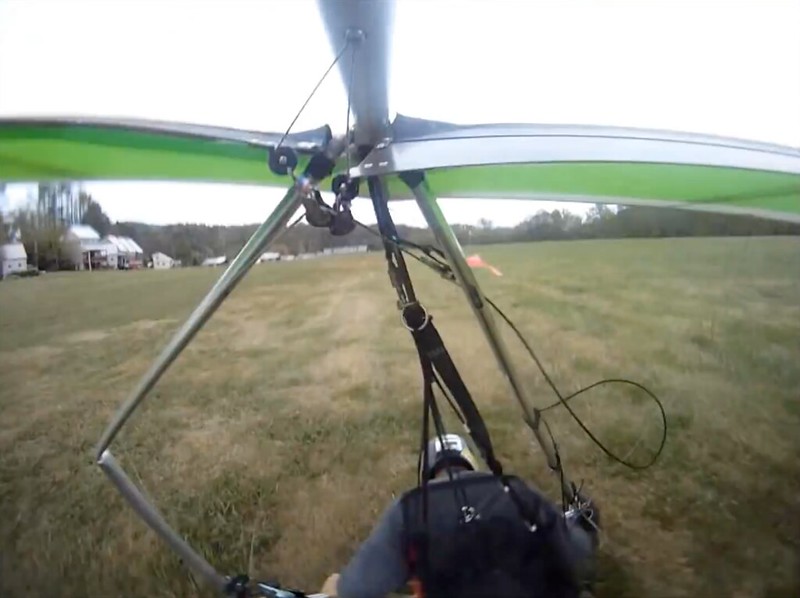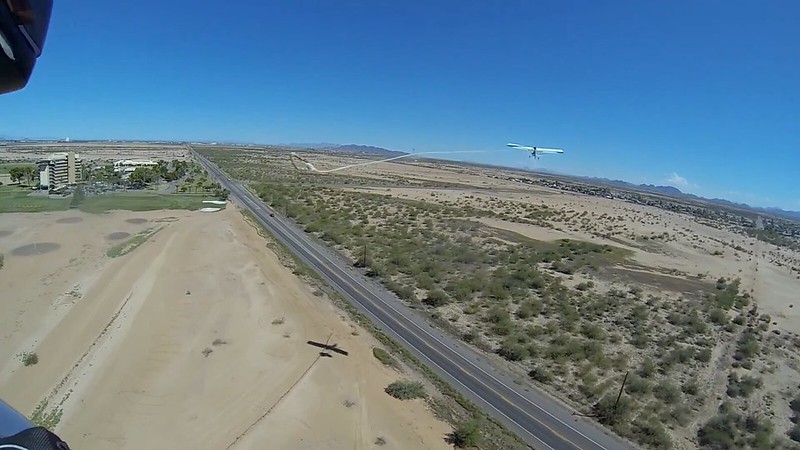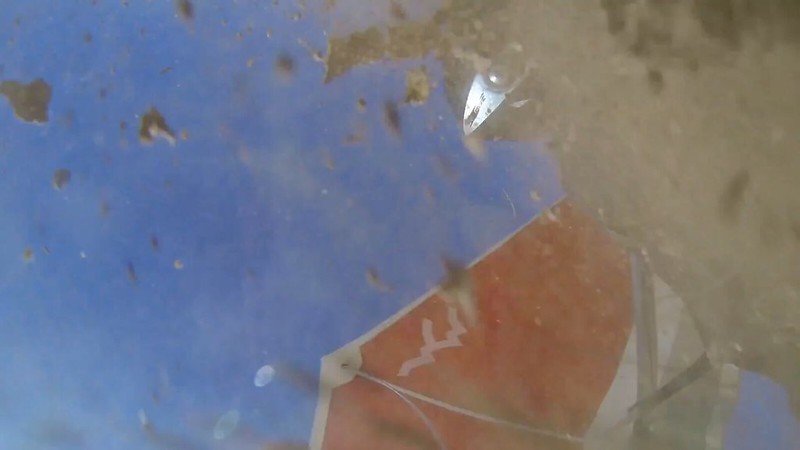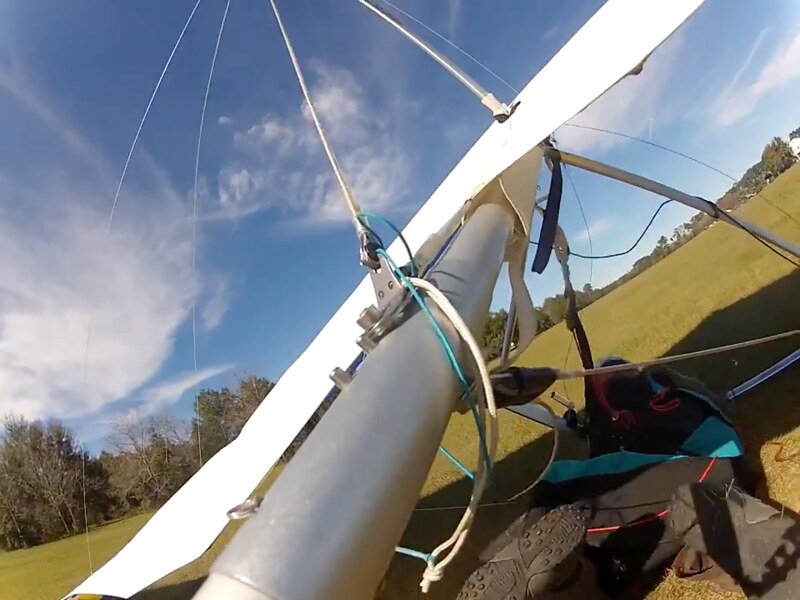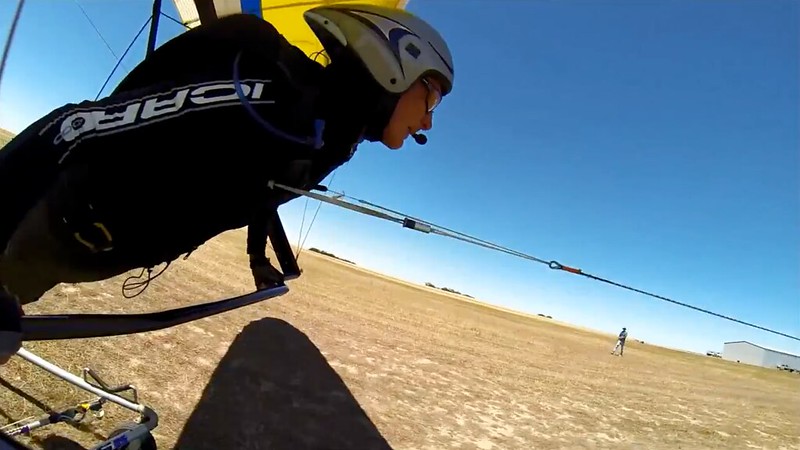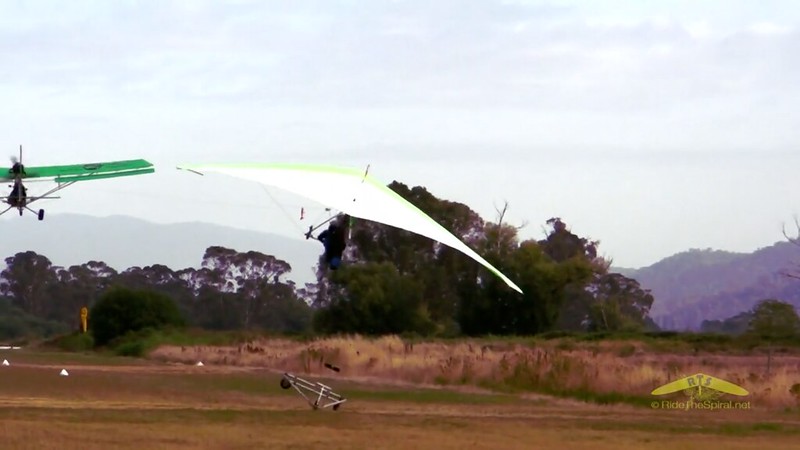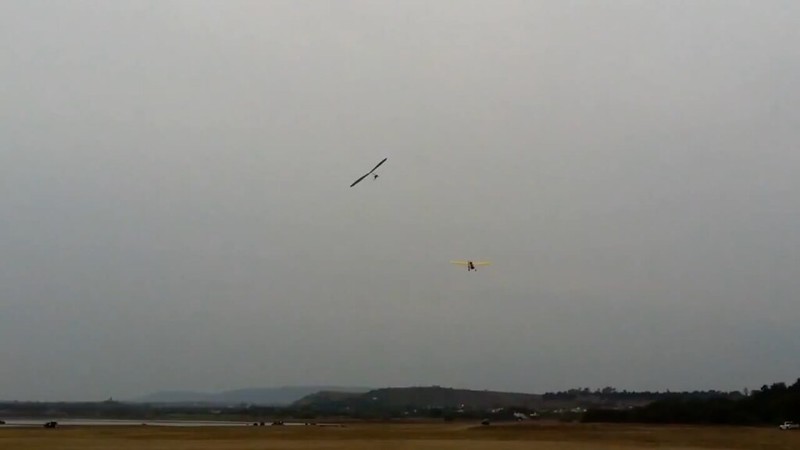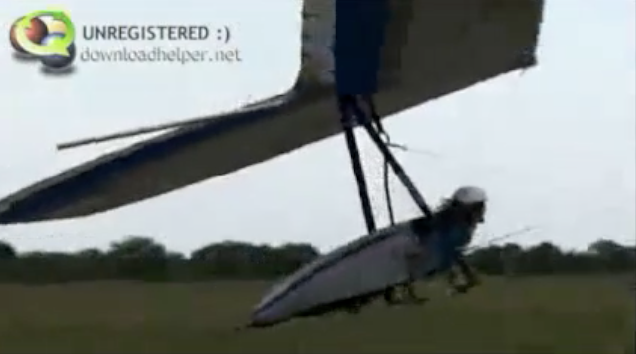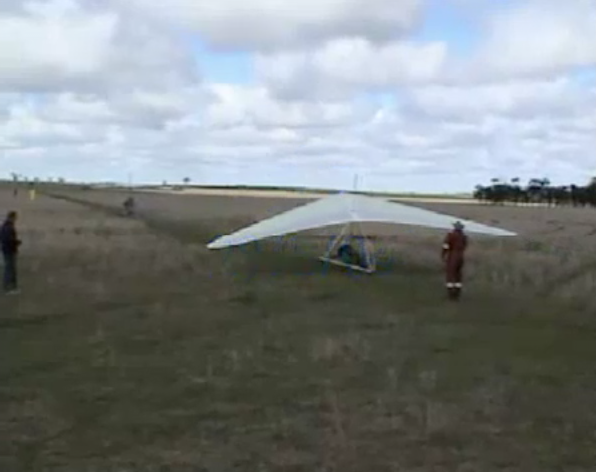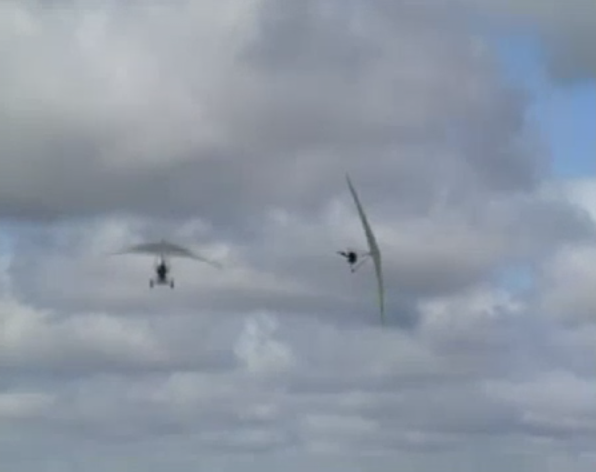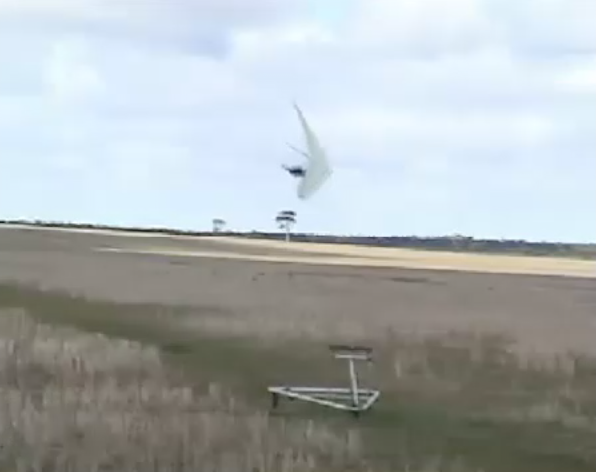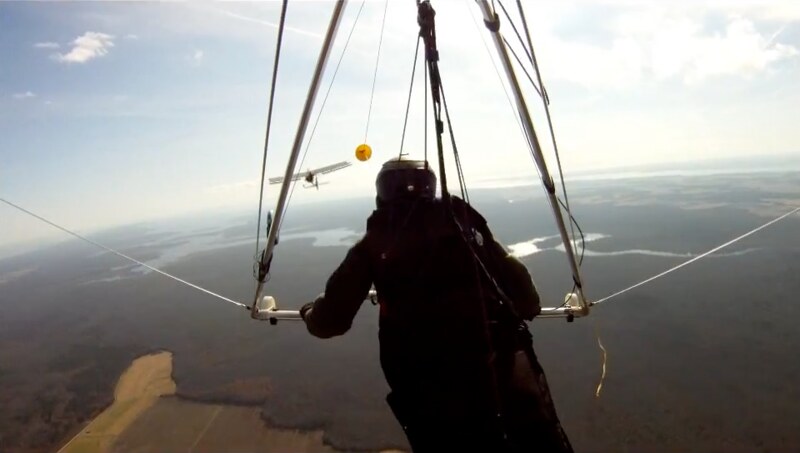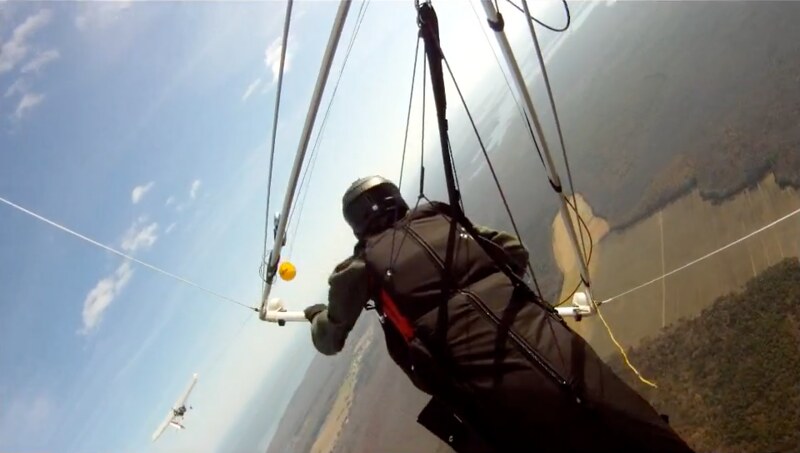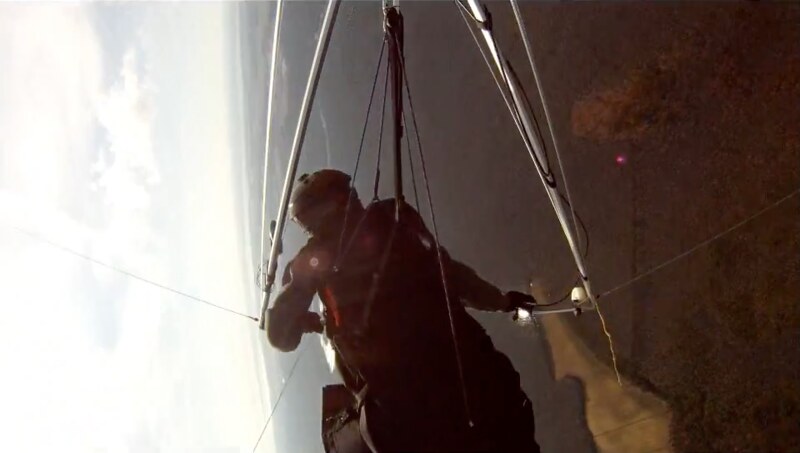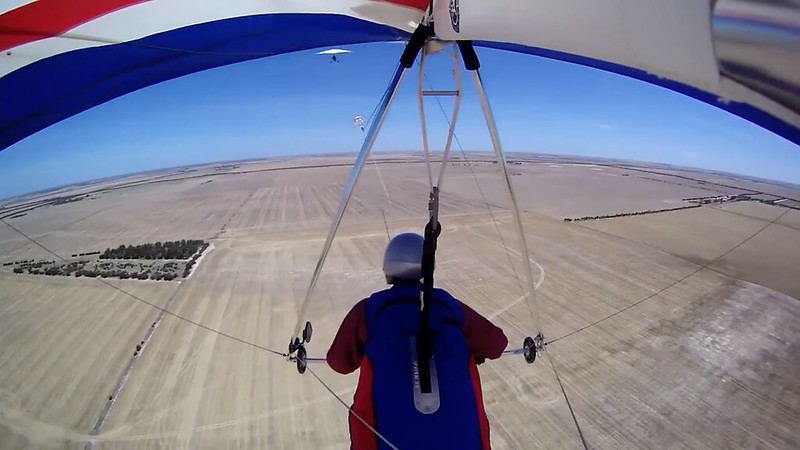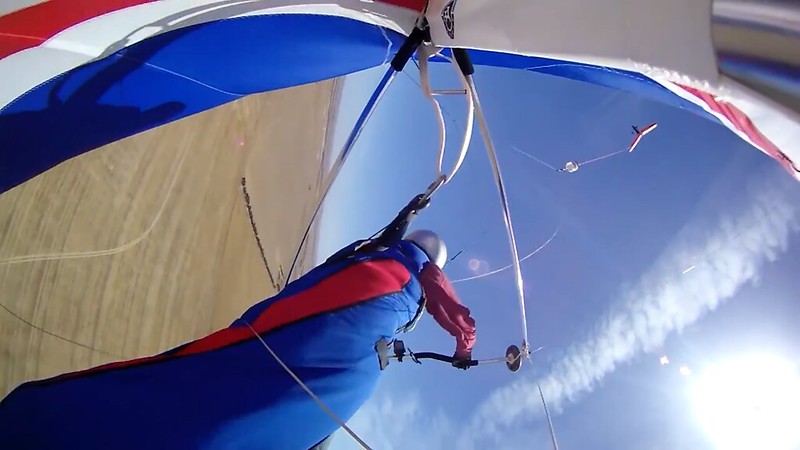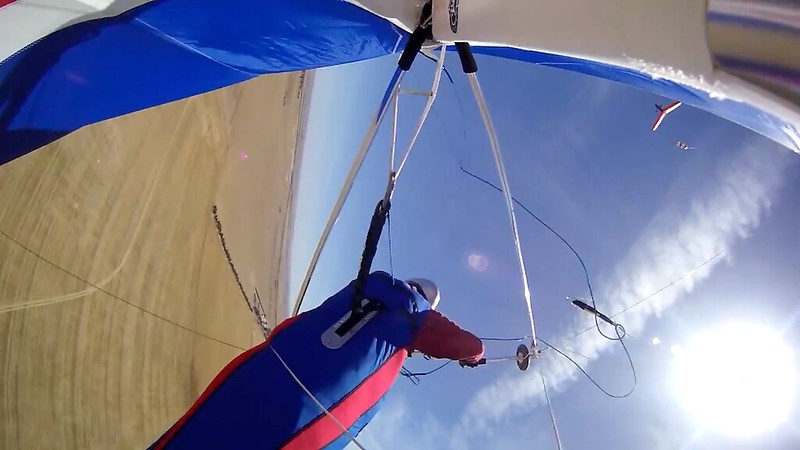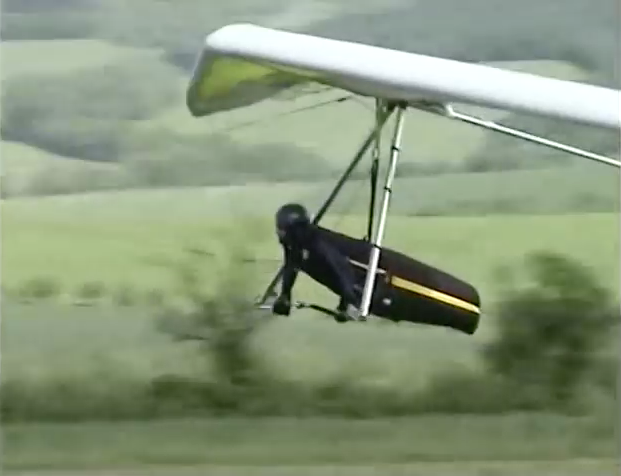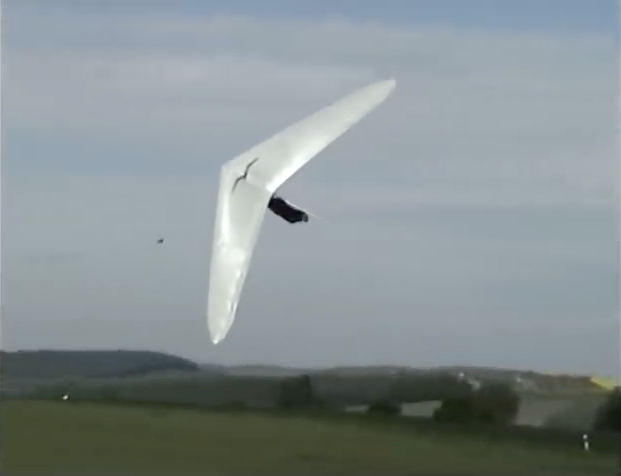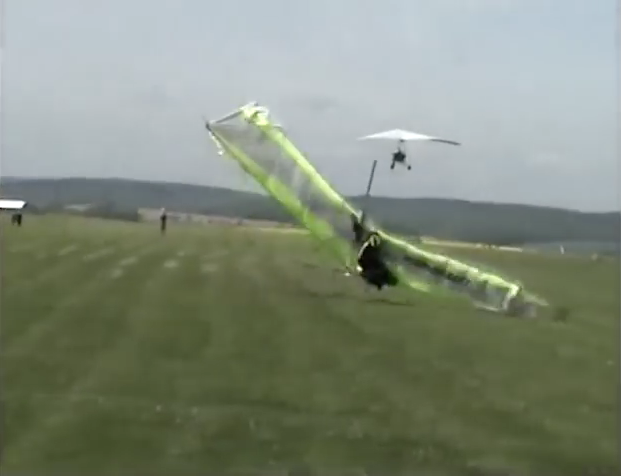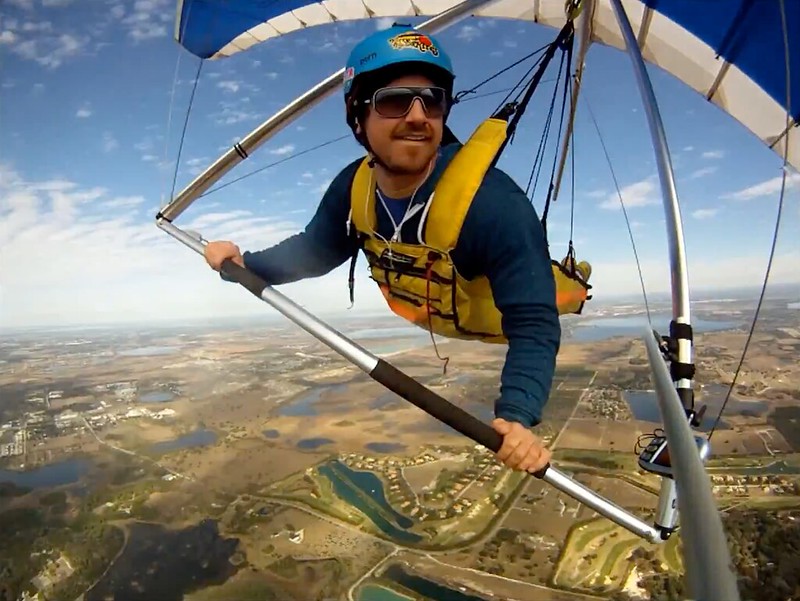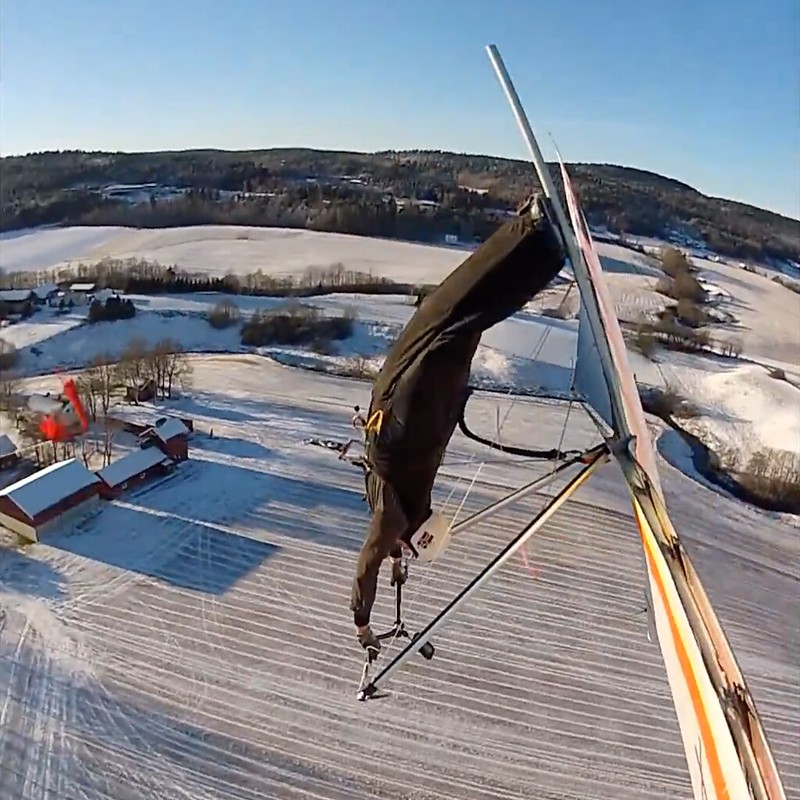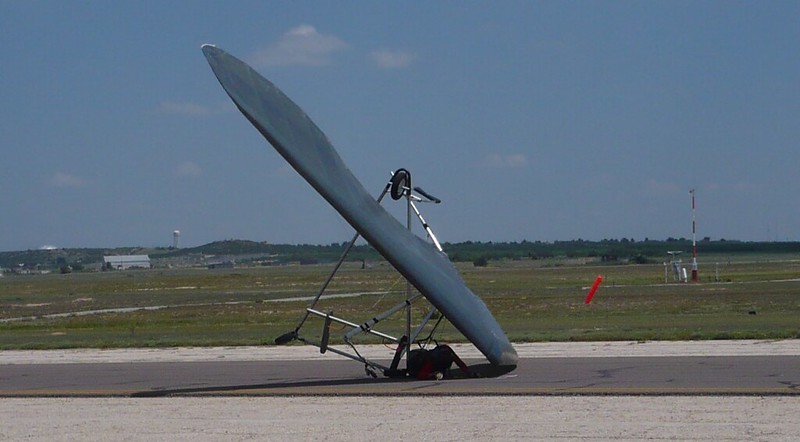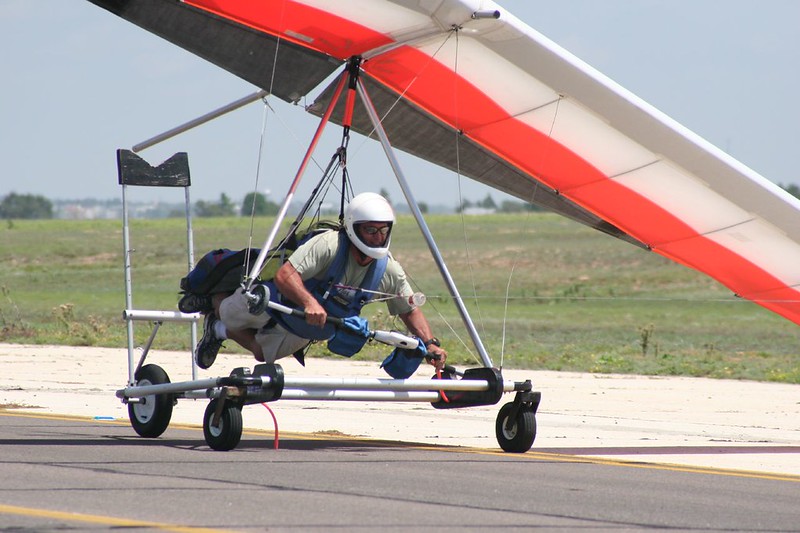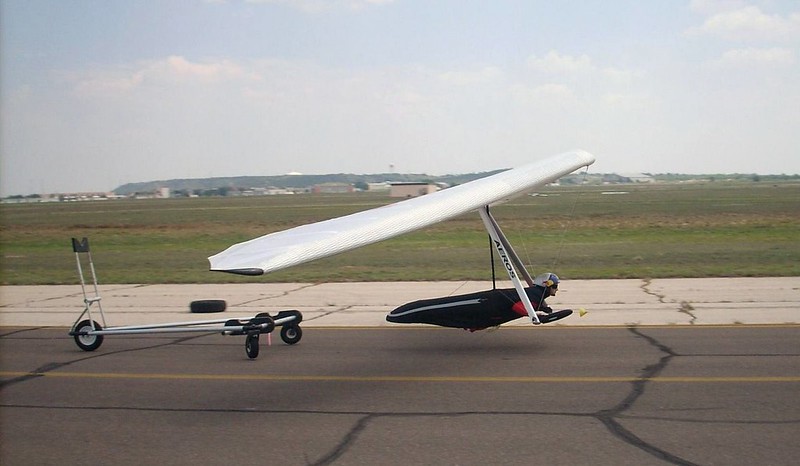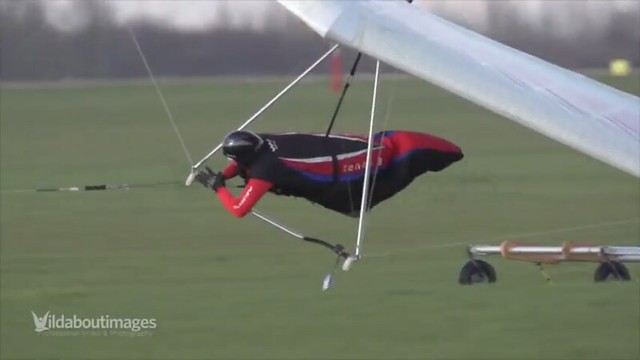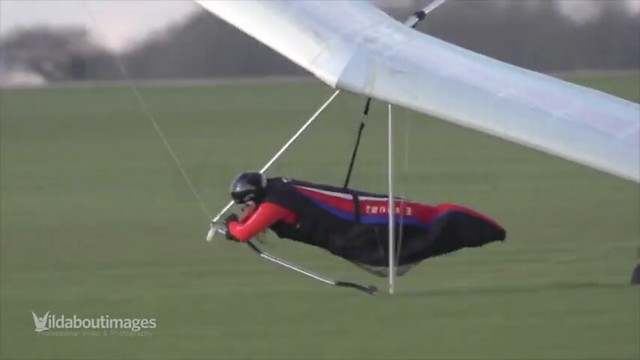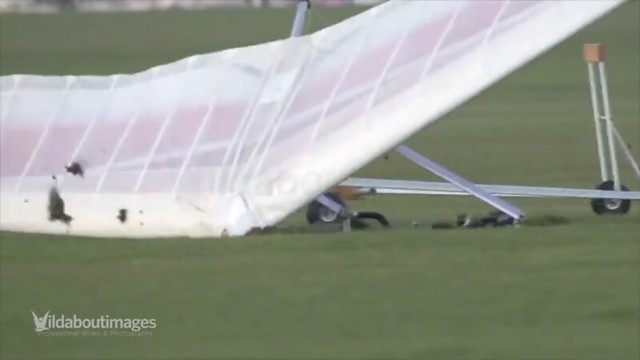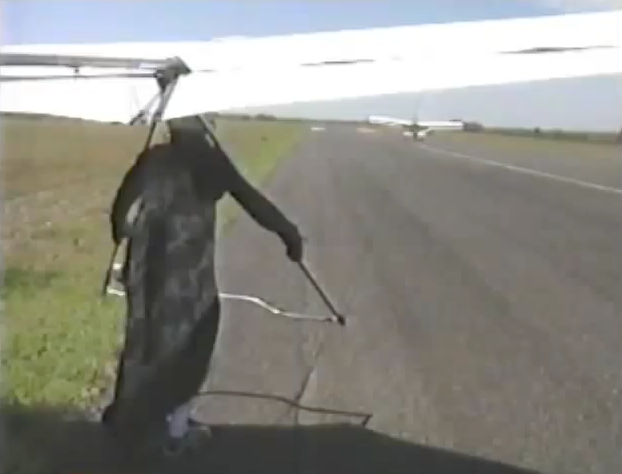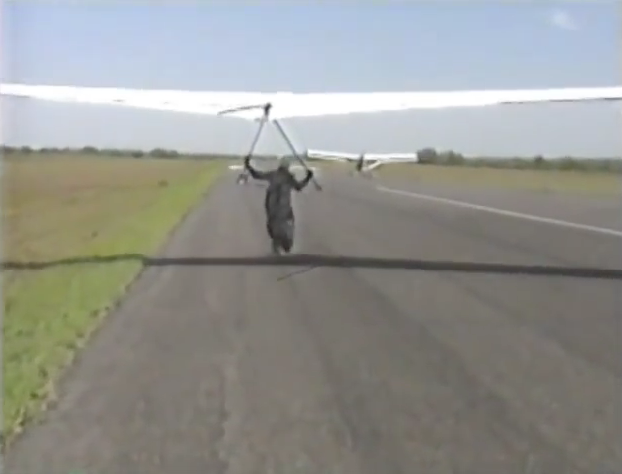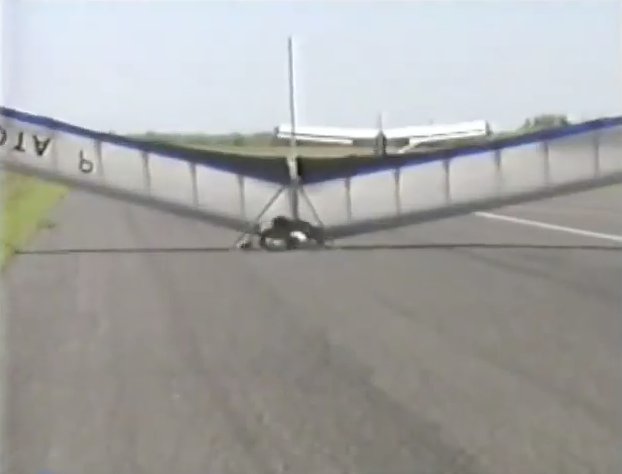http://ozreport.com/forum/viewtopic.php?t=9230
Departing the launch cart
Jim Rooney - 2007/08/30 10:26:08 UTC
Read Davis's latest towing storry (cowboy up)...
Yeah...
http://ozreport.com/forum/viewtopic.php?t=24846
Is this a joke ?
Bart Weghorst - 2011/08/28 20:29:27 UTC
Now I don't give a shit about breaking strength anymore. I really don't care what the numbers are. I just want my weaklink to break every once in a while.
...582 at high altitude.
Let's do that.
http://ozreport.com/11.171
2007/08/30 02:03:01 UTC - Flying in Alpine, WY
2007/08/30 02:06:50 UTC - Aerotowing behind Cowboy Up
The special conditions at Alpine (Cowboy Up s operation at Alpine, WY)
http://ozreport.com/forum/viewtopic.php?t=9230
Departing the launch cart
You'll find a long conversation about aerotowing and leaving the cart (and carts in general) at the URL above. I'll add a bit to that conversation here. I'm sure that I've written about this subject before from my previous experiences here at Cowboy Up, but I thought I was expand a bit on the earlier discussion.
Cowboy Up offers aerotowing at Alpine, Wyoming. It is on a dry lake bed at 5,500' AGL. The air temperatures is in the upper eighties. Tiki is piloting a 583 powered Dragonfly. The lake bed is not rolled, but is rough. The cart has slick plastic cradles with a line below the control frame for you to hang on to. The cradles move easily from side to side.
This is the most difficult aerotowing I do. Most of my aerotowing takes place in low elevation with thick air. The air is quite thin here, it feels different, and it feels especially different on the cart. You've got to hold on a lot longer before you are at a safe flying speed. A lot longer.
You also have to hold on a lot longer because you are towing behind a 583 and they take a long time to accelerate. I tow mostly behind 912 or 914's and these monsters jerk you right out of the cart and into the air. Not so here. I was towing at Cloud 9 a lot before I came here, and their monster Dragonfly would drag you up at 1,000 fpm +.
I am used to towing behind 583's, for example behind Bobby Bailey, but not 583's at 5,500'AGL, except when I come here. Frankly the climb rate is exceptionally slow and it takes a long time for the Dragonfly to get off the ground.
On my first tow today, I hung on to the cart for about twice or three times longer then I had been used to recently. I also resisted the cart to keep myself back a bit while I usually let the tug pull me through a bit to get at the proper angle of attack. This was Bart's request and given the circumstances (bumpy runway, slick cradles), I wanted to be sure to stay with and on the cart and not get pulled forward too much.
I hung on until I had plenty of airspeed and came off the cart climbing about six feet. This appeared unusually to Tiki as she is used to seeing folks come up just barely off the cart at a foot or two and she pulled back on the stick to bring the tug up a bit and get it off the ground as she thought I was rocketing to the moon.
I immediately felt the tug slow down as I flew at six feet off the ground and thought, oh well, what can I do now. Then instantly the rope got tight again and we proceeded without incident.
On the next tow, after I spoke with Tiki assuring her that I knew better than to get too high behind the tug, I made sure to hold on much longer. In fact I held on so long that I took the cart up with me before I let go. Now they have a rope on this cart, but I checked it to be sure that it couldn't wrap around my base tube. I adjusted the rope tightness (easy to do by rotating one end of the rope), so that the rope was touching the bottom of the base tube as I held it. Even if the rope was completely slack as long as I had two hands on it widely spaced it wouldn't catch the base tube.
Still, as I have pointed out, the oranges hoses are better and Bart is considering putting them on this cart. The rope is fine, the hoses, better.
I pulled the cart off the ground and stuffed the bar. I had to have the bar all the way back even though I had half VG on, to stay down with the tug, Still I was above it for the first ten or fifteen seconds, with the bar stuffed, as I said. This is easy to do with a Wills Wing Sport 2, but may be a bit more problematic with a topless glider.
It takes Tiki a long time to climb out (relative to what I experienced in Michigan) at this high altitude and with this low power tug. You can't have everything and if you adjust your expectations and your practices, it is just fine.
On my second and third tow the wind was a side wind and the wing on the upwind side lifted a bit as it had plenty of time while I was on the cart before I had enough speed to fly away. But I just held on tight (much tighter than normally) and made sure I didn't get off the cart until I was flying. It came with me a bit on the third tow also.
So aerotowing is not the same every where. I have to readjust my procedures and expectations and "feel" when I'm presented with radically new circumstances.
2007/08/30 02:06:50 UTC - Aerotowing behind Cowboy Up
The special conditions at Alpine (Cowboy Up s operation at Alpine, WY)
Good job, Davis. Ya got a whole six words into the entry before fucking something up.
And you'll find a much longer conversation about the conversation over here from someone with a functional brain and a deep hatred for all you fucking lying incompetent douchebags.
I'll add a bit to that conversation here.
Go for it. I've got ya covered.
I'm sure that I've written about this subject before from my previous experiences here at Cowboy Up, but I thought I was expand a bit on the earlier discussion.
Keep up the great work.
Cowboy Up offers aerotowing at Alpine, Wyoming. It is on a dry lake bed at 5,500' AGL.
Wow. A dry lake bed at 5500' AGL. Must be quite the tourist attraction.
The air temperatures is in the upper eighties.
That's the afternoon, right? What is the temperatures at night?
Tiki is piloting a 583 powered Dragonfly.
Is that anything like the 582s Jim Keen-Intellect Rooney is blathering on about in the referenced discussion?
The lake bed is not rolled, but is rough.
Oh. It's rough despite all that not rolling they're doing?
The cart has slick plastic cradles with a line below the control frame for you to hang on to.
Cool.
http://ozreport.com/9.074
It was Ricky Duncan
Davis Straub - 2005/04/05
Paul Voight - 2005/04/05
Several years ago we had a dolly-connected-to-cart incident of the worst kind in New York, where an Atos pilot passed his vario safety lanyard around the cart rope. He installed his vario after his glider was in the cart. He had a vicious nose over at launch speed, which broke his neck among other things. He lived at a hospital for many months, but ultimately died due to the incident. No portion of glider assembly/preparation should be done on the cart.
So two years and four months ago we get to hear about the most horrible AT fatality in the history of the sport...
- that wouldn't have happened with the stub hold-downs
- idiot fucking Paul Voight tells us to solve the problem by not doing any portion of glider assembly/preparation on the cart
-- (and doesn't bother dignifying this guy with a name)
- and idiot fucking Bart and Tiki are STILL using continuous hold-downs on their carts.
So where are they making the lower bridle connection? To the basetube?
The cradles move easily from side to side.
Oh good. That'll make it easier to put the gliders on the carts with the neck breaking hold-downs.
This is the most difficult aerotowing I do.
- It's a good thing you're very experienced and skilled and have been at an around all this plenty long enough to understand what's what and who's who.
- So I guess you're using an extra safe weak link, right?
Most of my aerotowing takes place in low elevation with thick air.
- With really thick tow operators.
- What? There aren't any 5500' AGL runways in Florida, Texas, Maryland, Michigan, Australia?
The air is quite thin here, it feels different, and it feels especially different on the cart.
What is it? Kinda wet, oily, rubbery, abrasive? Especially on the cart?
You've got to hold on a lot longer before you are at a safe flying speed. A lot longer.
Duh. And that's because it FEELS different.
You also have to hold on a lot longer because you are towing behind a 583 and they take a long time to accelerate.
So you're saying power is a GOOD thing? Would that continue to be true AFTER you leave the cart as well?
I tow mostly behind 912 or 914's and these monsters jerk you right out of the cart and into the air.
Sounds dangerous. Why don't they just use 583s?
Not so here. I was towing at Cloud 9 a lot before I came here, and their monster Dragonfly would drag you up at 1,000 fpm +.
Jesus! I sure hope you're using a Davis Link which will very clearly provide protection from excessive angles of attack, high bank turns and the like for that form of towing.
I am used to towing behind 583's...
You're the only "person" used to towing behind 583s.
...for example behind Bobby Bailey...
He's a fucking genius when it comes to this shit!
...but not 583's at 5,500'AGL...
Fuck no. 5500 feet AGL at Alpine is over 11K MSL. And that's just the takeoff. By the time you get to release altitude you'll need oxygen to maintain any hope of having your brain continue to function rationally.
...except when I come here. Frankly the climb rate is exceptionally slow and it takes a long time for the Dragonfly to get off the ground.
Must be loads o' fun on their tandems.
On my first tow today, I hung on to the cart for about twice or three times longer then I had been used to recently.
- Than what happened?
- Wow. That must've taken amazing levels of skill and judgment. I'd have just looked at my watch and pushed out at the point I always do when I'm launching at Ridgely at 64' AGL.
I also resisted the cart to keep myself back a bit while I usually let the tug pull me through a bit to get at the proper angle of attack.
So you're flying pro toad...
http://c2.staticflickr.com/8/7321/8745745209_f8c0238de2_o.jpg
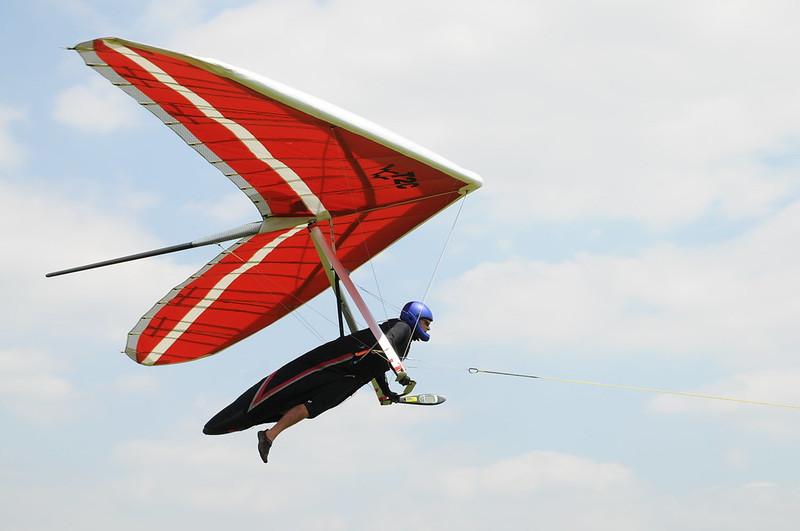
...right?
This was Bart's request and given the circumstances (bumpy runway, slick cradles), I wanted to be sure to stay with and on the cart and not get pulled forward too much.
Just loop the hold-down line over your speedbar and use your vario safety lanyard to make sure it doesn't come off.
I hung on until I had plenty of airspeed and came off the cart climbing about six feet. This appeared unusually to Tiki...
This appeared unusually WHAT to Tiki?
...as she is used to seeing folks come up just barely off the cart at a foot or two...
Yeah, seeing somebody climb about six feet would really freak me out too if I were used to seeing folk come up just barely off the cart at a foot or two.
...and she pulled back on the stick to bring the tug up a bit and get it off the ground...
Really great response. Hard to ever go wrong forcing your plane off the runway prematurely when you think you have a situation developing behind you.
...as she thought I was rocketing to the moon.
Oh. She's capable of THINKING?
I immediately felt the tug slow down...
How? Did you immediately feel your glider slow down too?
...as I flew at six feet off the ground and thought, oh well, what can I do now.
Release? Pitch out abruptly and use your Davis Link as an instant hands free release?
http://www.hanggliding.org/viewtopic.php?t=34041
Cart dynamics
Nate Wreyford - 2016/02/08 22:32:30 UTC
With such an awesome resource like Bart and Tiki (in addition to other instructors and advanced pilots in Wharton), why go to some place with so much noise and so little signal when looking for answers?
Hope for Tiki to fix whatever's going on back there by giving you the rope? Pray for the Dragonfly's tow mast breakaway protector to increase the safety of the towing operation?
Then instantly the rope got tight again and we proceeded without incident.
You wouldn't have had an INCIDENT if the rope hadn't gotten tight again. Just an...
http://ozreport.com/forum/viewtopic.php?t=31052
Poll on weaklinks
Davis Straub - 2013/03/06 18:29:05 UTC
You know, after all this discussion I'm now convinced that it is a very good idea to treat the weaklink as a release, that that is exactly what we do when we have a weaklink on one side of a pro tow bridle. That that is exactly what has happened to me in a number of situations and that the whole business about a weaklink only for the glider not breaking isn't really the case nor a good idea for hang gliding.
I'm happy to have a relatively weak weaklink, and have never had a serious problem with the Greenspot 130, just an inconvenience now and then.
...INCONVENIENCE. And that would've made you HAPPY.
On the next tow, after I spoke with Tiki assuring her that I knew better than to get too high behind the tug...
Well yeah. You've been at an around all this plenty long enough to understand what's what and who's who.
I made sure to hold on much longer. In fact I held on so long that I took the cart up with me before I let go.
That's OK. 583 propwash won't make your Davis Link function to increase the safety of the towing operation?
Now they have a rope on this cart, but I checked it to be sure that it couldn't wrap around my base tube.
Idiot. Didn't you just hear Paul Voight tell you to do no portion of glider assembly/preparation on the cart?
I adjusted the rope tightness (easy to do by rotating one end of the rope), so that the rope was touching the bottom of the base tube as I held it. Even if the rope was completely slack as long as I had two hands on it widely spaced it wouldn't catch the base tube.
Yeah, that's a really good workaround to address a known lethal defect in cart design. Brings to mind:
http://www.hanggliding.org/viewtopic.php?t=22540
LMFP release dysfunction
Diev Hart - 2011/07/14 17:19:12 UTC
I have had issues with them releasing under load. So I don't try to release it under a lot of load now.
Still, as I have pointed out, the oranges hoses are better and Bart is considering putting them on this cart.
Before or after the next guy gets quaffed or killed?
The rope is fine, the hoses, better.
Yeah, the rope's fine. So was Robin Strid's spinnaker shackle release...
http://www.flickr.com/photos/aerotowrelease/8318769461/

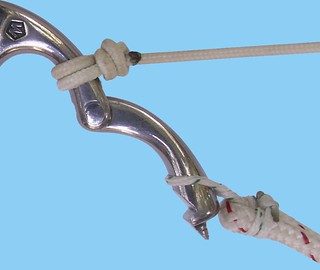 http://www.flickr.com/photos/aerotowrelease/8318781297/
http://www.flickr.com/photos/aerotowrelease/8318781297/
...before it killed him. And then after it had been banned for a short while from the Worlds at Hay...
http://ozreport.com/9.009
2005 Worlds
Davis Straub - 2005/01/11
This type of release mechanism has been banned (at least for a short while) from the Worlds at Hay.
...it was fine again.
I pulled the cart off the ground and stuffed the bar. I had to have the bar all the way back even though I had half VG on, to stay down with the tug,
Like this?:
03114
http://farm4.staticflickr.com/3728/9655895292_f4f808fb0e_o.png
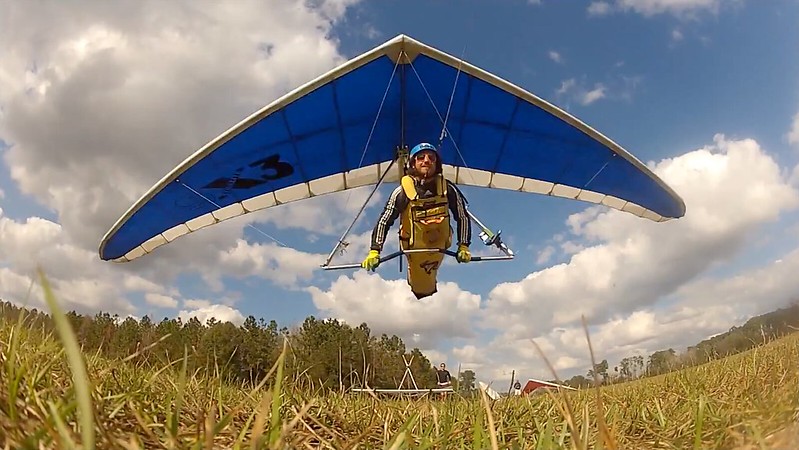
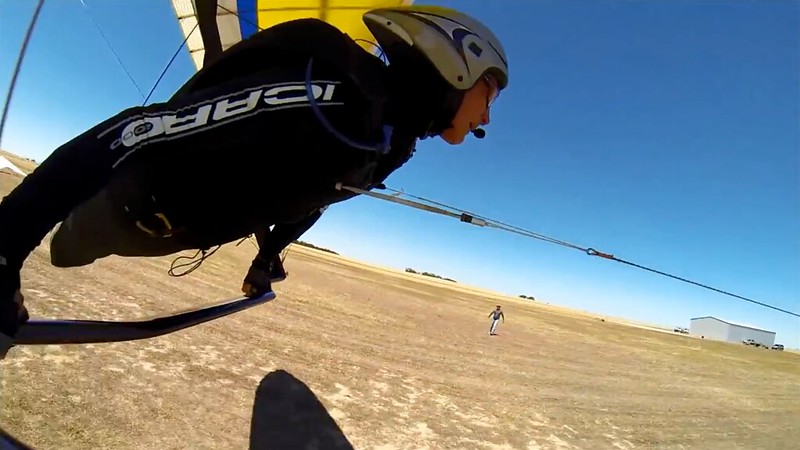 http://farm8.staticflickr.com/7200/14097626583_03972773c6_o.png
http://farm8.staticflickr.com/7200/14097626583_03972773c6_o.png
03-02421
Still I was above it for the first ten or fifteen seconds, with the bar stuffed, as I said.
- Oh. So you made a normal airspeed takeoff behind an underpowered tug at high density altitude and you were unable to hold your glider down even to tug level as it was getting airborne for ten or fifteen seconds.
- And notice the way Davis is conspicuously not telling us that he's flying pro toad?
http://www.hanggliding.org/viewtopic.php?t=22233
Looking for pro-tow release
Davis Straub - 2011/06/16 12:31:33 UTC
Well, that may be his opinion, but it is nothing more than that. Protow requires more experience and skill and you certainly wouldn't use it as the first method for a new aerotow pilots but is not less safe (nothing in hang gliding is safe) than the two point method.
He CAN'T because that would undermine his position that there are no dangerous downsides to pro toad.
Zack C - 2011/06/16 03:14:35 UTC
I've never aerotowed pilot-only, but it is my understanding that this configuration pulls the pilot forward significantly, limiting the amount he can pull in further.
Davis Straub - 2011/06/16 05:11:44 UTC
Incorrect understanding.
Lying goddam piece o' shit.
This is easy to do with a Wills Wing Sport 2...
What's easy to do? Not be able to get your glider down to tug level for ten or fifteen seconds off of takeoff in dead air?
...but may be a bit more problematic with a topless glider.
Right, Davis. It's gonna be HARDER to get a faster cleaner wing down than it will be for a mushy intermediate glider. That's why the Sport 2 is the Number One choice for aerobatic competitions.
It takes Tiki a long time to climb out (relative to what I experienced in Michigan)...
Must be a real bitch hanging out up there with the bar stuffed waiting for her.
...at this high altitude and with this low power tug. You can't have everything and if you adjust your expectations and your practices, it is just fine.
Yeah...
- Like if Zack Marzec had adjusted his expectations and practices more in keeping with his Davis Link being strong and reliable enough to better avoid frequent breaks from turbulence he'd have been JUST FINE.
- And because you got three whole problematic launches in smooth air without piling in at this shoddy incompetent operation it's obvious that everybody who ever comes there will also always be JUST FINE.
On my second and third tow the wind was a side wind...
What many of us would refer to as a "crosswind".
...and the wing on the upwind side lifted a bit as it had plenty of time while I was on the cart before I had enough speed to fly away.
But don't worry, people of varying ages. Davis has certified Cowboy Up as crash-proof.
But I just held on tight (much tighter than normally) and made sure I didn't get off the cart until I was flying.
Pure genius.
It came with me a bit on the third tow also.
And I'll bet the crosswind made it a lot harder to hit the problematic propwash.
So aerotowing is not the same every where.
But at one particular operation aerotowing will be exactly the same 365 days a year and regardless of what gliders, tugs, flavors of tow equipment are being used. So Zack Marzec didn't really buy it at Quest three years ago.
I have to readjust my procedures and expectations and "feel" when I'm presented with radically new circumstances.
Oh. Those were radically new circumstances. So we should be fine launching in a gusty fifteen mile per hour ninety cross at Ridgely if you did so well with those radically new circumstances.
http://ozreport.com/forum/viewtopic.php?t=30971
Zach Marzec
Mark Frutiger - 2013/02/09 02:31:37 UTC
The turbulance level was strong, among the strongest thermal activity I've felt leaving the field. I've encountered stronger mechanical mixing, but the vertical velocity this time was very strong.
Not RADICALLY NEW circumstances. Some of the stronger thermal activity they've had, but both professional pilots elected to continue the tow. Total nonevent for the one who hadn't decertified his plane and didn't have an instantaneous total power failure while climbing hard in a near stall situation.
Total fuckin' goldmine. Grade A smoking gun stuff.

